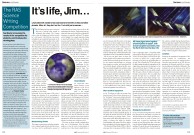 The world around us is full of relationships, rhythms, correlations, patterns. And mathematics underlies all of these, and can be used to predict future outcomes. Our brains have evolved to survive in this world: to analyse the information it receives through our senses and spot patterns in the complexity around us. In fact, it’s thought that the mathematical structure embedded in the rhythm and melody of music is what our brains latch on to, and that this is why we enjoy listening to it. It is perhaps not surprising then that there is a great deal of overlap between mathematics and the art that our brain finds so pleasing to look at.
The world around us is full of relationships, rhythms, correlations, patterns. And mathematics underlies all of these, and can be used to predict future outcomes. Our brains have evolved to survive in this world: to analyse the information it receives through our senses and spot patterns in the complexity around us. In fact, it’s thought that the mathematical structure embedded in the rhythm and melody of music is what our brains latch on to, and that this is why we enjoy listening to it. It is perhaps not surprising then that there is a great deal of overlap between mathematics and the art that our brain finds so pleasing to look at.
This article is a whistle-stop tour of some of the types of art with a strong mathematical component, or conversely where a mathematical visualisation has an astonishing beauty.
Read full article on +plus
 The USS Enterprise drops out of warp and slips into a parking orbit around an uncharted alien planet. The Captain orders a scan for lifesigns and, within seconds, he is told exactly what lifeforms are present, including the pre-industrial humanoids on the southern continent. How feasible is this, really?
The USS Enterprise drops out of warp and slips into a parking orbit around an uncharted alien planet. The Captain orders a scan for lifesigns and, within seconds, he is told exactly what lifeforms are present, including the pre-industrial humanoids on the southern continent. How feasible is this, really?




 The USS Enterprise drops out of warp and slips into a parking orbit around an uncharted alien planet. The good Captain orders a scan for lifesigns, and within seconds he is being informed exactly what lifeforms are present, including the preindustrial tribes of humanoids on the southern continent. How feasible is this really? Well, unfortunately for Star Trek fans, identifying a species from orbit will perhaps forever remain in the realm of science fiction. For astrobiologists, however, revealing the presence of life on a remote planet is becoming possible even now, on 21st century Earth. Within a decade there will be telescopes capable of detecting the chemical fingerprints of life on planets nearly 50 light years away. And within out lifetimes there may even be telescopes able to image the oceans and continents of alien worlds.
The USS Enterprise drops out of warp and slips into a parking orbit around an uncharted alien planet. The good Captain orders a scan for lifesigns, and within seconds he is being informed exactly what lifeforms are present, including the preindustrial tribes of humanoids on the southern continent. How feasible is this really? Well, unfortunately for Star Trek fans, identifying a species from orbit will perhaps forever remain in the realm of science fiction. For astrobiologists, however, revealing the presence of life on a remote planet is becoming possible even now, on 21st century Earth. Within a decade there will be telescopes capable of detecting the chemical fingerprints of life on planets nearly 50 light years away. And within out lifetimes there may even be telescopes able to image the oceans and continents of alien worlds.

